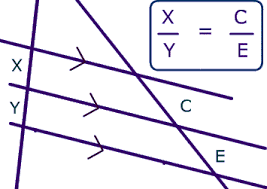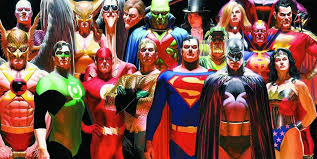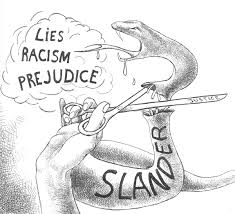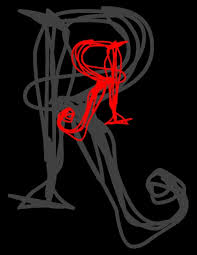Friday, November 30, 2012
Thinking Outside the Box
The "Allegory of the Cave" and "No Exit" demonstrate two very distinct ways of viewing the same concept. The "Allegory of the Cave" intends to show how humans can be their own saviors. Instead of waiting for salvation one can simply be his or her won salvation. The prisoner walked out of the cave in an effort to be enlightened but at the time he did not know this would be the outcome. He struggled to adapt to the light but after he did he was open to a new world that had always existed but he had been deprived of. He was his own savior and was able to escape "Hell." In "No Exit" there is also the idea of salvation but at a different level. In "No Exit" there is no salvation hence the name. Here Sartre creates an actual Hell in which three sinners find themselves. They do not seem to understand their situation at fist but soon enough they realize it is worse than what they thought it would be. They were expecting fire, torture, the works but what they found was much worse. They became their own punishment and there was no escaping themselves, obviously. They saw how hateful of humans they were because they saw themselves reflected in the people they were grouped with. All of the "Allegory of the Cave" is one big metaphor. It seems to be an even greater metaphor than "No Exit." Hell is created and shown as a character in both works of literature but in different ways.
Thursday, November 29, 2012
Wednesday, November 28, 2012
LAQ's "No Exit"
General
1) "No Exit" is a play about what Hell truly is according to the French writer Jean Paul Sartre. He sets the play in a room lacking windows and personal grooming utensils. Garcin, Inez and Estelle find themselves locked up in this room. They know they are dead yet they can still see what goes on in their lives. At first everyone is filled with confusion and no one has the courage to confess the reason why they were sent to hell. But the truth is eventually uncovered. Inez had slept with her cousins wife, Garcin had run away form "justice" and Estelle had killed her unwanted child. As these truths were uncovered so were the true personalities of each person. They soon understood the reason behind their grouping. Each one had the other two as polar opposites or enemies. Each one was surrounded by two "torturers." The people in that locked room would make Hell itself.
2) People make Hell. We create what Hell is. It is a place filled with the most disgusting of beings and once you find yourself in this place you start to realize you to form part of this repugnant group of people. All your sins are uncovered and you learn of others. You being to distrust those accompanying you in this locked room of putrid. insanity catches up to you and those around you and now you find yourself in a room with the the most hateful of people and slowly losing your sanity.
3) Sartre creates a tone of confusion that slowly morphs into one of clarity. From the very beginning the three individuals in hell no nothing of what comes next. They have the idea that Hell is a place of torture and pain but are quickly drowned in a state of confusion when nothing happens. Slowly they begin to learn of one another and the reasons for their sending to Hell becomes apparent. Each one was guilty of committing intolerable sins. At the end it ll becomes clear for they have fallen into the trap of Hell itself. They themselves create a Hell they cannot escape for they are Hell itself.
4) Sartre does a vidvi description of his setting. "No mirrors, I notice. No windows. Only to be expected. And nothing breakable." This comes to show the simplicity of the room the three individuals find themselves in. A room where all you could use as entertainment are you very own thoughts. The very same thoughts that drove them to madness. We also see the use of indirect characterization through each person. Estelle shows an arrogant attitude toward the others and everyone in her life for that matter. "Please Mr.Garcin!......You're sitting on my sofa......I was setting my life in order. You may laugh but you'd do better to follow my example." Inez is cruel. She says things as they are. She informs the others of their true fate. Garçon is "introspective." He reflects on the reasons for his being sent to Hell. He slowly realized he's a coward and nothing more. The tone is one of mystery. From the very beginning the characters know where they are and deep inside they know why. It is unknown to the audience until they continue reading. The audience becomes aware of the situation for the three characters and it all becomes clear.
Characterization
1) Sartre doesn't seem to use direct characterization throughout the play. He focuses on the usage of indirect characterization. He has each character describe the sin that had them sent to Hell. Each sin describes the personalities of the characters. Inez is cold and cruel. She is the one who breaks the news to the group about them themselves being the "torturers." She live under the same roof that his uncle and his wife lived under. She ran away with her not caring about her cousin. Estelle killed her child because she didn't want to ruin her perfect life with her husband. She wasn't about to leave him for a poor man who had gotten her pregnant. Garcin was fighting the wrong battle for the right reasons and when things got out of hand he became what he was from the start, a coward. He also hurt his wife emotionally and physically and she took it all in without a single complaint.
2) The diction changes completely when Sartre goes from one character to another. Each character is completely different from the other two. This I part of what helps create their Hell. Estelle has a proper way of speaking. She was from Paris and her husband was well off. Garcin speaks like any man of his condition. He doesn't seem to have any trace of respect for women for he was unable to treat is own woman right. Inez is just obsessive. She wants Estelle for herself and the sight of her with Garcin hurts her. She yells and speaks aloofly no matter what it is she is speaking about.
3) The three protagonists seem to be dynamic characters but they are actually static as far as the audience knows. They committed terrible sins and were sent to Hell for it but they don't regret it. They start knowing about their sins and end up revealing them but they don't change their personalities or seem to regret the sins committed.
4) These three characters didn't seem to be like anyone I would know but they do seem like people I could possibly meet in the future. The sims they committed are things that people out of their minds actually do. Of course the story and setting itself is unrealistic and not capable of existing in real life. Estelle killed her child and women who cannot handle a child take the easy way and kill or abandon it. People I would surround myself with wouldn't take such an abominable action.
1) "No Exit" is a play about what Hell truly is according to the French writer Jean Paul Sartre. He sets the play in a room lacking windows and personal grooming utensils. Garcin, Inez and Estelle find themselves locked up in this room. They know they are dead yet they can still see what goes on in their lives. At first everyone is filled with confusion and no one has the courage to confess the reason why they were sent to hell. But the truth is eventually uncovered. Inez had slept with her cousins wife, Garcin had run away form "justice" and Estelle had killed her unwanted child. As these truths were uncovered so were the true personalities of each person. They soon understood the reason behind their grouping. Each one had the other two as polar opposites or enemies. Each one was surrounded by two "torturers." The people in that locked room would make Hell itself.
2) People make Hell. We create what Hell is. It is a place filled with the most disgusting of beings and once you find yourself in this place you start to realize you to form part of this repugnant group of people. All your sins are uncovered and you learn of others. You being to distrust those accompanying you in this locked room of putrid. insanity catches up to you and those around you and now you find yourself in a room with the the most hateful of people and slowly losing your sanity.
3) Sartre creates a tone of confusion that slowly morphs into one of clarity. From the very beginning the three individuals in hell no nothing of what comes next. They have the idea that Hell is a place of torture and pain but are quickly drowned in a state of confusion when nothing happens. Slowly they begin to learn of one another and the reasons for their sending to Hell becomes apparent. Each one was guilty of committing intolerable sins. At the end it ll becomes clear for they have fallen into the trap of Hell itself. They themselves create a Hell they cannot escape for they are Hell itself.
4) Sartre does a vidvi description of his setting. "No mirrors, I notice. No windows. Only to be expected. And nothing breakable." This comes to show the simplicity of the room the three individuals find themselves in. A room where all you could use as entertainment are you very own thoughts. The very same thoughts that drove them to madness. We also see the use of indirect characterization through each person. Estelle shows an arrogant attitude toward the others and everyone in her life for that matter. "Please Mr.Garcin!......You're sitting on my sofa......I was setting my life in order. You may laugh but you'd do better to follow my example." Inez is cruel. She says things as they are. She informs the others of their true fate. Garçon is "introspective." He reflects on the reasons for his being sent to Hell. He slowly realized he's a coward and nothing more. The tone is one of mystery. From the very beginning the characters know where they are and deep inside they know why. It is unknown to the audience until they continue reading. The audience becomes aware of the situation for the three characters and it all becomes clear.
Characterization
1) Sartre doesn't seem to use direct characterization throughout the play. He focuses on the usage of indirect characterization. He has each character describe the sin that had them sent to Hell. Each sin describes the personalities of the characters. Inez is cold and cruel. She is the one who breaks the news to the group about them themselves being the "torturers." She live under the same roof that his uncle and his wife lived under. She ran away with her not caring about her cousin. Estelle killed her child because she didn't want to ruin her perfect life with her husband. She wasn't about to leave him for a poor man who had gotten her pregnant. Garcin was fighting the wrong battle for the right reasons and when things got out of hand he became what he was from the start, a coward. He also hurt his wife emotionally and physically and she took it all in without a single complaint.
2) The diction changes completely when Sartre goes from one character to another. Each character is completely different from the other two. This I part of what helps create their Hell. Estelle has a proper way of speaking. She was from Paris and her husband was well off. Garcin speaks like any man of his condition. He doesn't seem to have any trace of respect for women for he was unable to treat is own woman right. Inez is just obsessive. She wants Estelle for herself and the sight of her with Garcin hurts her. She yells and speaks aloofly no matter what it is she is speaking about.
3) The three protagonists seem to be dynamic characters but they are actually static as far as the audience knows. They committed terrible sins and were sent to Hell for it but they don't regret it. They start knowing about their sins and end up revealing them but they don't change their personalities or seem to regret the sins committed.
4) These three characters didn't seem to be like anyone I would know but they do seem like people I could possibly meet in the future. The sims they committed are things that people out of their minds actually do. Of course the story and setting itself is unrealistic and not capable of existing in real life. Estelle killed her child and women who cannot handle a child take the easy way and kill or abandon it. People I would surround myself with wouldn't take such an abominable action.
Friday, November 23, 2012
Allegory of the Cave Sonnet
Happiness and sorrow these prisoners will know not of
For their lives are limited to the inside of a cave
Not depression nor love
Will hinder the minds of these men much less than brave
One soon sees the opportunity to leave and live
But finds the barrier of light blocking his path
He had a lot to gain and little to give
But chose to return to the cave and its wrath
Not an act of cowardice this man showed
But rather a man of knowledge he had become
Acquired knowledge to the prisoners this man owed
For they were trapped in that cave dark and fearsome
The prisoners blinded by disbelief
Kept their thoughts, ignorant and brief
For their lives are limited to the inside of a cave
Not depression nor love
Will hinder the minds of these men much less than brave
One soon sees the opportunity to leave and live
But finds the barrier of light blocking his path
He had a lot to gain and little to give
But chose to return to the cave and its wrath
Not an act of cowardice this man showed
But rather a man of knowledge he had become
Acquired knowledge to the prisoners this man owed
For they were trapped in that cave dark and fearsome
The prisoners blinded by disbelief
Kept their thoughts, ignorant and brief
Monday, November 19, 2012
Plato Study Questions
1. The allegory of the cave represents all that is maintained hidden from people throughout their lives due to their close mindedness an maybe even ignorance.
2. The cave represents the separation of some people minds from the outside world. The chains hold them from ever seeing beyond what they have chosen to believe. The outside world are those new ideas waiting to be discover and understood.
3. The prisoners re restrained from leaving the cave. They no nothing more than what they have been allowed to see. They have to chance at "enlightenment" for they no nothing more than a cave wall and vague unknown shadows.
4. The prisoners have a limited perspective on what they can experience. They have been seeing only what the people who have them captive have wanted them to see. Their world has become the cave an will never be anything more unless they seek it.
5. School is a perfect example of shackling the mind. You are taught what teachers are told to teach you.You take tests to measure how much information you were actually able to retain and if you don't pass then you are taught once again. Now there are ways in which students can free themselves from the shackles of school. They can take AP courses that take them out of their comfort zone and challenge them with more difficult concepts and ways of viewing things. Student do have the option of taking the regular courses but some like taking on challenges and leaving the cave.
6. The freed prisoner is exposed to the outside world. When he first walks in to the sunlight his eyes burn due to the brightness of the sun. The burn is all that is different for people. It the things they are scared to experience. The freed prisoner now knows the is a different world outside of the cave and can now choose between the two.
7. A person can choose to experience different things or they can stay in their circle of comfort forever. They can walk out into the light or they can stay hidden in the cave.
8. Prisoners are freed if they are shown the way out. If they are lead to the cave exit then they can be free. one must be shown the way. One must be taught the different paths there are in life but it is up to us to choose which one to follow.
9. There is definitely a distinction between appearances and reality. You can't know how real something is through only appearances. You can start with appearances but it must not stop at that for once you do you are already limiting the amount of knowledge you can acquire through learning more. Appearances don't always tell the truth but they often give insight into the truth.
10. People will only gain knowledge through what they see without ever gaining any true certainty of whether it is real or not. There will never be any change or improvement of any sort for prisoners will remain prisoners and never know what wonders are found outside of the cave.
2. The cave represents the separation of some people minds from the outside world. The chains hold them from ever seeing beyond what they have chosen to believe. The outside world are those new ideas waiting to be discover and understood.
3. The prisoners re restrained from leaving the cave. They no nothing more than what they have been allowed to see. They have to chance at "enlightenment" for they no nothing more than a cave wall and vague unknown shadows.
4. The prisoners have a limited perspective on what they can experience. They have been seeing only what the people who have them captive have wanted them to see. Their world has become the cave an will never be anything more unless they seek it.
5. School is a perfect example of shackling the mind. You are taught what teachers are told to teach you.You take tests to measure how much information you were actually able to retain and if you don't pass then you are taught once again. Now there are ways in which students can free themselves from the shackles of school. They can take AP courses that take them out of their comfort zone and challenge them with more difficult concepts and ways of viewing things. Student do have the option of taking the regular courses but some like taking on challenges and leaving the cave.
6. The freed prisoner is exposed to the outside world. When he first walks in to the sunlight his eyes burn due to the brightness of the sun. The burn is all that is different for people. It the things they are scared to experience. The freed prisoner now knows the is a different world outside of the cave and can now choose between the two.
7. A person can choose to experience different things or they can stay in their circle of comfort forever. They can walk out into the light or they can stay hidden in the cave.
8. Prisoners are freed if they are shown the way out. If they are lead to the cave exit then they can be free. one must be shown the way. One must be taught the different paths there are in life but it is up to us to choose which one to follow.
9. There is definitely a distinction between appearances and reality. You can't know how real something is through only appearances. You can start with appearances but it must not stop at that for once you do you are already limiting the amount of knowledge you can acquire through learning more. Appearances don't always tell the truth but they often give insight into the truth.
10. People will only gain knowledge through what they see without ever gaining any true certainty of whether it is real or not. There will never be any change or improvement of any sort for prisoners will remain prisoners and never know what wonders are found outside of the cave.
Monday, November 12, 2012
The Tortilla Curtain LAQ's
General
1) The novel begins with the introduction of Delaney Mossbacher and Candido Rincon. The two, from very different backgrounds and social standings, cross ways when Delaney runs Candido over near Topanga Canyon. From here on we see two lives unfold. Each life is affecting the other but the men involved are blinded to this. Candido is an illegal immigrant trying to get by with his teenage wife America while Delaney is an American citizen living a life of comfort alongside his wife Kyra and her stepson Jordan. While Delaney finds himself struggling with obstacles of minor importance, Candido and his wife are striving to survive and find work. Candido, injured, can't stop his wife from seeking work and when she does find it it is underpaid and she is overworked. America is raped and this adds to the tension building in the couples lives. The building of a wall around Arrollo Blanco is approved and Delaney is frustrated by such decision but get over it quickly. In the meantime, Candido's source of labor is shut down and so him and his wife are forced to move to Canoga Park where they are robbed of their savings and belongings. On Thanksgiving a series of unfortunate events, including a fire and some more vandalism, unravel. Delaney is determined to find the culprit and even when he knows it hasn't been Candido causing such mischief he still chases after him with a gun. America has just given birth to a blind baby and a flood sweeps Candido, America, Delaney and the baby Socorro away. At the end we see Delaney fighting for his life and Candido saves him.
2) The theme of the novel ends up being the willingness to survive. Although Delaney spends his life facing insignificant obstacles to him they are life changing. The construction of a wall around his neighborhood, his relationship with his wife, and his relationship with "friends" are all part of the life Delaney finds himself fighting for. Candido fights for a life in which he can stay alive and can provide for his wife. He had to face the difficulty of finding for, shelter, and safety. These things are taken for granted by Delaney and the things Delaney has are only present in Candidos dreams.
3) The author uses a tone of despair. Delaney finds himself struggling to continue living the life he once knew. Him and his family moved to Arrollo Blanco because he wanted to be close to nature but the building of a wall would only separate him form nature. He is forced to give in since he has no power to change decisions made by the leaders of the neighborhood. He has no voice yet is desperate to continue living the life he dreamed up for himself. Candido is in urgent need of money to sustain his wife and grant her the life he had promised her before moving out of Mexico. He is looking for shelter and, just as Delaney had, he has dreams and aspirations that seem impossible to reach.
4) The author used two different settings combined into one. Delaney lived near Topanga Canyon but inside an American neighborhood where people lived lives of luxuries and commodities. Candido lived in Topanga Canyon where he was faced with starvation and homelessness. Even though both lived in pretty much the same location, their surroundings reflected their social standings. Blind baby Socorro, introduced at the end of the novel, served as a sybmbol of all obstacles faced by Candido. The baby was born blind and died at the end of the novel just like Candido's dreams of bettering his life. The flood served as symbol of how, no matter what social class, people are people and struggle through life but some remain good even when they have all the reasons in the world to hate.
Characterization
1) The author uses indirect characterization of a group of people through a character of a different ethnicity. America befriends a white women seeking work such as she is doing. This white women is alcoholic and a US citizen but still helps characterize the situation illegal immigrants often find themselves in. The women is intoxicated and vulnerable. Immigrants are also weak and vulnerable in the United States for they have no stability nor do they have safety. The only reason the white women finds herself looking for work with immigrants is because she has chosen to live a dirty and useless life otherwise one would never see a white women looking for work. It shows how low illegal immigrants are categorized by whites. Only the dirty whites mix with immigrants according to this. Although Delaney and his democratic ideals give us some insight into his personality it doesn't show all of it. He was raised in a white people environment nonetheless. He has those views in him and we see them appear when he sees the stability of his life threatened. His inner selfish self wants his life to continue being comfortable and so so he blames the nearest vulnerable person, Candido.
2) There were major diction changes in the novel due to the cultural differences between protagonists. The syntax was fairly constant. The Mexicans introduced in the story were all fairly vulgar and uneducated. They came form a low social class and so a poor education if any at all was expected from them. Delaney and his family, on the other hand, were educated people with higher ranked jobs that required skill and knowledge. They were also surrounded by people just like them if not higher on the social scale.
3) There are two protagonists. Candido is a static character. He has dreams, he works to fulfill them, he fails, and he starts all over throughout the novel. Delaney starts off as a laid back man. He has a job that doesn't require him to leave his house, he has set democratic ideals, and he loves his family. His life is almost carefree but we see his perspective on life change once he sees his own threatened. Instead of trying to resolve his problems he seeks people to blame them on. He goes from understanding to blinded. He knows Candido isn't the one responsible for all the problems in his life but he decides to take his anger out on him and chases him down. The very Candido ends up being his life saver.
4) This novel definitely introduced me to real life characters. The situations laid out in the novel are current. They are things that are happening right now. We see people like Candido and Delaney everyday. Many immigrants move into the United States in search of better lives and just like there are immigrants like Candido there are also white people like Delaney who live carefree lives filled with commodities. These are the two extreme of the spectrum. There is a middle class made up of both immigrants and whites among other ethnicities that don't live like the characters in the novel but these characters served as very good portrayals of such.
1) The novel begins with the introduction of Delaney Mossbacher and Candido Rincon. The two, from very different backgrounds and social standings, cross ways when Delaney runs Candido over near Topanga Canyon. From here on we see two lives unfold. Each life is affecting the other but the men involved are blinded to this. Candido is an illegal immigrant trying to get by with his teenage wife America while Delaney is an American citizen living a life of comfort alongside his wife Kyra and her stepson Jordan. While Delaney finds himself struggling with obstacles of minor importance, Candido and his wife are striving to survive and find work. Candido, injured, can't stop his wife from seeking work and when she does find it it is underpaid and she is overworked. America is raped and this adds to the tension building in the couples lives. The building of a wall around Arrollo Blanco is approved and Delaney is frustrated by such decision but get over it quickly. In the meantime, Candido's source of labor is shut down and so him and his wife are forced to move to Canoga Park where they are robbed of their savings and belongings. On Thanksgiving a series of unfortunate events, including a fire and some more vandalism, unravel. Delaney is determined to find the culprit and even when he knows it hasn't been Candido causing such mischief he still chases after him with a gun. America has just given birth to a blind baby and a flood sweeps Candido, America, Delaney and the baby Socorro away. At the end we see Delaney fighting for his life and Candido saves him.
2) The theme of the novel ends up being the willingness to survive. Although Delaney spends his life facing insignificant obstacles to him they are life changing. The construction of a wall around his neighborhood, his relationship with his wife, and his relationship with "friends" are all part of the life Delaney finds himself fighting for. Candido fights for a life in which he can stay alive and can provide for his wife. He had to face the difficulty of finding for, shelter, and safety. These things are taken for granted by Delaney and the things Delaney has are only present in Candidos dreams.
3) The author uses a tone of despair. Delaney finds himself struggling to continue living the life he once knew. Him and his family moved to Arrollo Blanco because he wanted to be close to nature but the building of a wall would only separate him form nature. He is forced to give in since he has no power to change decisions made by the leaders of the neighborhood. He has no voice yet is desperate to continue living the life he dreamed up for himself. Candido is in urgent need of money to sustain his wife and grant her the life he had promised her before moving out of Mexico. He is looking for shelter and, just as Delaney had, he has dreams and aspirations that seem impossible to reach.
4) The author used two different settings combined into one. Delaney lived near Topanga Canyon but inside an American neighborhood where people lived lives of luxuries and commodities. Candido lived in Topanga Canyon where he was faced with starvation and homelessness. Even though both lived in pretty much the same location, their surroundings reflected their social standings. Blind baby Socorro, introduced at the end of the novel, served as a sybmbol of all obstacles faced by Candido. The baby was born blind and died at the end of the novel just like Candido's dreams of bettering his life. The flood served as symbol of how, no matter what social class, people are people and struggle through life but some remain good even when they have all the reasons in the world to hate.
Characterization
1) The author uses indirect characterization of a group of people through a character of a different ethnicity. America befriends a white women seeking work such as she is doing. This white women is alcoholic and a US citizen but still helps characterize the situation illegal immigrants often find themselves in. The women is intoxicated and vulnerable. Immigrants are also weak and vulnerable in the United States for they have no stability nor do they have safety. The only reason the white women finds herself looking for work with immigrants is because she has chosen to live a dirty and useless life otherwise one would never see a white women looking for work. It shows how low illegal immigrants are categorized by whites. Only the dirty whites mix with immigrants according to this. Although Delaney and his democratic ideals give us some insight into his personality it doesn't show all of it. He was raised in a white people environment nonetheless. He has those views in him and we see them appear when he sees the stability of his life threatened. His inner selfish self wants his life to continue being comfortable and so so he blames the nearest vulnerable person, Candido.
2) There were major diction changes in the novel due to the cultural differences between protagonists. The syntax was fairly constant. The Mexicans introduced in the story were all fairly vulgar and uneducated. They came form a low social class and so a poor education if any at all was expected from them. Delaney and his family, on the other hand, were educated people with higher ranked jobs that required skill and knowledge. They were also surrounded by people just like them if not higher on the social scale.
3) There are two protagonists. Candido is a static character. He has dreams, he works to fulfill them, he fails, and he starts all over throughout the novel. Delaney starts off as a laid back man. He has a job that doesn't require him to leave his house, he has set democratic ideals, and he loves his family. His life is almost carefree but we see his perspective on life change once he sees his own threatened. Instead of trying to resolve his problems he seeks people to blame them on. He goes from understanding to blinded. He knows Candido isn't the one responsible for all the problems in his life but he decides to take his anger out on him and chases him down. The very Candido ends up being his life saver.
4) This novel definitely introduced me to real life characters. The situations laid out in the novel are current. They are things that are happening right now. We see people like Candido and Delaney everyday. Many immigrants move into the United States in search of better lives and just like there are immigrants like Candido there are also white people like Delaney who live carefree lives filled with commodities. These are the two extreme of the spectrum. There is a middle class made up of both immigrants and whites among other ethnicities that don't live like the characters in the novel but these characters served as very good portrayals of such.
Thursday, November 8, 2012
Sonnet Analysis Part I
The sonnet I chose, "Let me not to the marriage of true minds" by Shakespeare, speaks of what is classified as true love. Love must be kept unchanged even when the loved one is not present. Love is never shaken. Love serves as guide. Love's value cannot be determined for it is much to valuable. Love is not controlled by time but time does control the appearance of those involved. Love is everlasting. If this is proven false then Shakespeare never wrote and man never loved.
Big Question
What causes an individual to use traumatic events as motivation to succeed whereas others use them as excuses for their failure?
What is truly worth fighting for?
What is truly worth fighting for?
Monday, November 5, 2012
Vocabulary List #11 Remix
Affinity:

bilious:

cognate:

corollary:

cul-de-sac:

derring-do:

divination:

elixir:

folderol:

gamut:

hoi polloi:

ineffable:

lucubration:

mnemonic:

obloquy:

parameter:

pundit:

risible:

symptomatic:

volte-face:


bilious:
cognate:
corollary:
cul-de-sac:
derring-do:
divination:
elixir:
folderol:
gamut:
hoi polloi:
ineffable:
lucubration:
mnemonic:
obloquy:
parameter:
pundit:
risible:

symptomatic:
volte-face:
Vocabulary List #11 Definitions
affinity: a natural liking for or attraction to a person, thing, idea, etc.
bilious: peevish; irritable; cranky
cognate: related by birth; of the same parentage, descent, etc.
corollary: a preposition that is incidentally proved in providing another proposition
cul-de-sac: any situation in which further progress is impossible
derring-do: daring deeds; heroic daring
divination: perception by intuition; instinctive foresight
elixir: a sweetened, aromatic solution of alcohol and water containing, or used as a vehicle for, medicinal substance
folderol: trivial or nonsensical fuss
gamut: the entire scale or range
hoi polloi: the common people; the masses
ineffable: incapable of being expressed or described in words; inexpressible
lucubration: laborious work, study, thought, etc., especially at night
mnemonic: assisting or intended to assist the memory
obloquy: censure, blame, or abusive language aimed at a person or thing, especially by numerous persons or by the general public
parameter: a variable that must be given a specific value during the execution of a program or of a procedure within a program
pundit: a learned person, expert, or authority
risible: causing or capable of causing laughter; laughable; ludicrous
symptomatic: pertaining to symptom or symptoms
volte-face: a turnabout, especially a reversal of opinion or policy
bilious: peevish; irritable; cranky
cognate: related by birth; of the same parentage, descent, etc.
corollary: a preposition that is incidentally proved in providing another proposition
cul-de-sac: any situation in which further progress is impossible
derring-do: daring deeds; heroic daring
divination: perception by intuition; instinctive foresight
elixir: a sweetened, aromatic solution of alcohol and water containing, or used as a vehicle for, medicinal substance
folderol: trivial or nonsensical fuss
gamut: the entire scale or range
hoi polloi: the common people; the masses
ineffable: incapable of being expressed or described in words; inexpressible
lucubration: laborious work, study, thought, etc., especially at night
mnemonic: assisting or intended to assist the memory
obloquy: censure, blame, or abusive language aimed at a person or thing, especially by numerous persons or by the general public
parameter: a variable that must be given a specific value during the execution of a program or of a procedure within a program
pundit: a learned person, expert, or authority
risible: causing or capable of causing laughter; laughable; ludicrous
symptomatic: pertaining to symptom or symptoms
volte-face: a turnabout, especially a reversal of opinion or policy
Saturday, November 3, 2012
Sonnet
Sonnet 116
Let me not to the marriage of true minds
Admit impediments. Love is not love
Which alters when it alteration finds,
Or bends with the remover to remove.
O no, it is an ever-fixèd mark
That looks on tempests and is never shaken;
It is the star to every wand'ring bark,
Whose worth’s unknown, although his height be taken.
Love’s not time’s fool, though rosy lips and cheeks
Within his bending sickle’s compass come:
Love alters not with his brief hours and weeks,
But bears it out even to the edge of doom.
If this be error and upon me proved,
I never writ, nor no man ever loved.
"LOVE THIS SONNET!!!!!!"
Growing My PLN
I actually used a link that I found on Ming Chen's blog instead of the ones I found because I liked hers more. The link is http://aplove.blogspot.com/2007/11/ap-lit-hamlet-actscene-notes.html . This blog was designed to help senior's taking the AP Literature course and in the blog there was a section for help on Hamlet. The section summarized scenes from the play in note form. I started by commenting on how well organized the section was. They took the main points from each scene and placed them on bullet points with the least amount of words possible.
Friday, November 2, 2012
"AP Hamlet PLN"
http://www.artsvivants.ca/pdf/eth/activities/hamlet_guide.pdf
This study guide gave a major analysis of the play. It started off by giving background information about the play itself and then went into the analysis of it. It had quotes and explanations that went along with the quotes. It wasn't written by students but it was directed toward them.
http://www.novelguide.com/hamlet/biography.html
This site had background information about Shakespeare himself and then went on to summarizing the entire play scene by scene. This was followed by an analysis of the scene, analysis of themes, and important quotes.
http://itintegrationsg.blogspot.com/2009/01/hamlet-study-chart.html
On this blog there was a chart with all the information you would really need to know from Shakespeare. The chart provided things such as characters, plot summaries, themes, etc. It was a general amount of information from the play placed on to an organized chart.
http://itintegrationsg.blogspot.com/2009/01/hamlet-study-chart.html
On this site there were AP questions about the play that went scene by scene. These questions helped direct the study of Hamlet and helped students review each scene while they answered the questions.
http://www.enotes.com/hamlet/discuss/students-studying-hamlet-55205
This source went on a question answer format. Students studying Hamlet asked questions they were having trouble on and other students that had a reasonable explanation replied. This was a student run study site in which students helped students. Some had different view points of course but for the most part they were able to help each other out.
This study guide gave a major analysis of the play. It started off by giving background information about the play itself and then went into the analysis of it. It had quotes and explanations that went along with the quotes. It wasn't written by students but it was directed toward them.
http://www.novelguide.com/hamlet/biography.html
This site had background information about Shakespeare himself and then went on to summarizing the entire play scene by scene. This was followed by an analysis of the scene, analysis of themes, and important quotes.
http://itintegrationsg.blogspot.com/2009/01/hamlet-study-chart.html
On this blog there was a chart with all the information you would really need to know from Shakespeare. The chart provided things such as characters, plot summaries, themes, etc. It was a general amount of information from the play placed on to an organized chart.
http://itintegrationsg.blogspot.com/2009/01/hamlet-study-chart.html
On this site there were AP questions about the play that went scene by scene. These questions helped direct the study of Hamlet and helped students review each scene while they answered the questions.
http://www.enotes.com/hamlet/discuss/students-studying-hamlet-55205
This source went on a question answer format. Students studying Hamlet asked questions they were having trouble on and other students that had a reasonable explanation replied. This was a student run study site in which students helped students. Some had different view points of course but for the most part they were able to help each other out.
Subscribe to:
Comments (Atom)